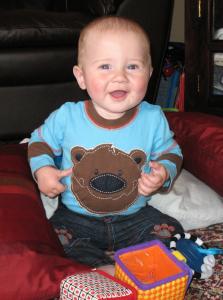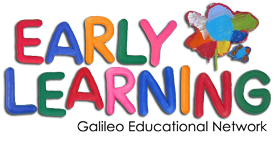
Even very young children can participate in their own learning and problem solving when it comes to some mathematical concepts such as quantity.
Dr. Friesen notes the great pleasure children take in discovering the patterns that live underneath mathematics.
Several studies outlined by Bransford, Brown and Cocking, in the book How People Learn: Brain, Mind, Experience, and School, prove this ability in babies as young as six months old.
The authors note, however that if children have some knowledge about mathematical concepts before they start school, it still means there is need for careful learning about mathematical concepts later on. Early understanding of quantity or numbers can guide a young child’s entry into learning about number concepts by the time they reach school age.
Studies of Babies and Mathematics
In one study (Starkey et al. 1990), babies between six and eight months old were shown a series of slides of either two or three-item displays.
Each successive picture showed different household items that varied in size, colour and shape. Half were shown a series of two-item displays, while the other half were shown a series of three-item displays. The researchers could tell the infants eventually got bored when the amount of time they looked at the slides dropped by half. The babies were then shown displays that alternated between two and three items, and if the displays showed a different number of items from what they had seen before, the infants began to show interest by looking again. The only common characteristic within the two-item and three-item displays was their numerical value, so one could say the infants habituated to the set of two or three things, and then recovered interest when they were shown a different number of things. The infants could have focused on the items’ shape, size, but they did not. This is an important clue they are able to process information that represents a number, at a rather abstract level.
Other researchers (Wynn, 1996) have shown infants pay attention to the number of times a toy rabbit jumps, so long as the number of jumping events they have to keep track of is kept between two and four.
Links
Downloads
This document contains information about core math skills, such as compensation, patterns and cardinality. The skills are also identified in the math-related play outlined in the other math downloads on the site.
Mathematical reasoning and problem solving are just some of the math skills gained by playing with a simple set of blocks.
A simple bedtime story can open the door to another “what if” conversation that involves math.
Read how one child develops correspondence and compensation skills, thanks to a simple game of jumping frogs, rocks or marbles.
Breakfast time can be a great opportunity to think mathematically, as one mom and her son discovered.
Even a walk along and across a muddy creek can be explored deeply in a mathematical way.
Ratios are the name of the game when a young child decides to make “soup” out of different types of marbles.
Many children’s books address mathematical ideas in fun and interesting ways. Simply reading them, however, won’t instill deep mathematical understanding. But when kids can model the stories and are encouraged to find ways to generalize the mathematical ideas the stories contain, books can provide great opportunities for deepening mathematical understanding.

